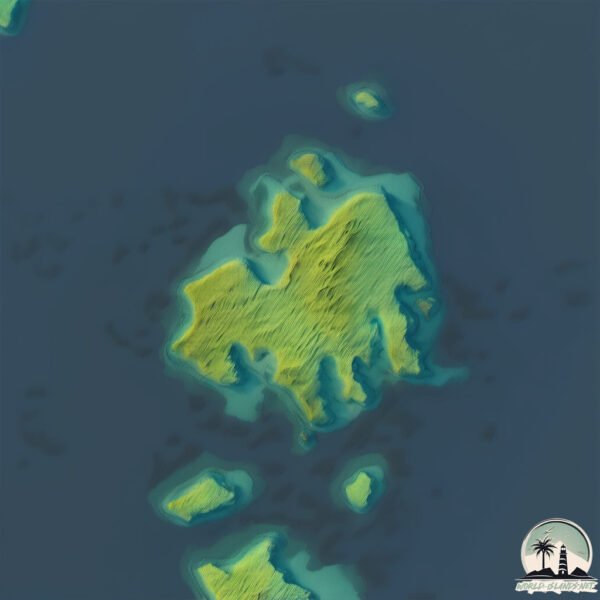Welcome to Île de l’Hélicoptère , a Continental island in the Hudson Strait, part of the majestic Arctic Ocean. This guide offers a comprehensive overview of what makes Île de l’Hélicoptère unique – from its geography and climate to its population, infrastructure, and beyond. Dive into the details:
Geography and size of Île de l’Hélicoptère
Size: 4.157 km²Coastline: 13.8 kmOcean: Arctic OceanSea: Hudson StraitContinent: North America
Île de l’Hélicoptère is a Small Island spanning 4.2 km² with a coastline of 13.8 km.
Archipel: –
Tectonic Plate: North America – Covers North America and parts of the Atlantic and Arctic Oceans, characterized by diverse geological features and varying levels of seismic activity.
The geographic heart of the island is pinpointed at these coordinates:
Climate and weather of Île de l’Hélicoptère
Climate Zone: ContinentalClimate Details: Subarctic ClimateTemperature: Cold Summer
Climate Characteristics: Characterized by long, extremely cold winters and short, cool summers, often found in northern latitudes of North America and Eurasia.
Topography and nature of Île de l’Hélicoptère
Timezone: UTC-05:00Timezone places: America/New_YorkMax. Elevation: 88 m Mean Elevation: 29 mVegetation: Herbaceous CoverTree Coverage: 86%
The mean elevation is 29 m. The highest elevation on the island reaches approximately 88 meters above sea level. The island is characterized by Plains: Flat, low-lying lands characterized by a maximum elevation of up to 200 meters. On islands, plains are typically coastal lowlands or central flat areas.
Dominating Vegetation: Herbaceous Cover
Vegetation: 4 vegetation zones – Diverse Island
Infrastructure and Travelling to Île de l’Hélicoptère
Does the island have a public airport? no .
Does the island have a major port? no .
The mean population of Île de l’Hélicoptère is 0 per km². Île de l’Hélicoptère is Uninhabited. The island belongs to Canada .
Continuing your journey, Île Anngiaraaluk is the next notable island, situated merely km away.
Ile de la Réunion Préparation de l'hélicoptère / Reunion island helicopter Preparation
Abonnez-vous et aimez la vidéo ! Subscribe and like ! Facebook ...
Ile de la Réunion Préparation de l'hélicoptère / Reunion island helicopter Preparation
Abonnez-vous et aimez la vidéo ! Subscribe and like ! Facebook ...
Abonnez-vous et aimez la vidéo ! Subscribe and like ! Facebook ...
58- Tour d'hélicoptère aux Îles Féroé - Danemark | Teste avec moi
Je te propose de faire un tour d'hélicoptère avec moi aux îles Féroé ...
Je te propose de faire un tour d'hélicoptère avec moi aux îles Féroé en partant de l'île Vágar en direction de Klaksvík avec un ...
Helicopter day trip to a remote island
In this video, @bambamfabrications and I go on a day trip in a mates ...
In this video, @bambamfabrications and I go on a day trip in a mates chopper to a remote island to fish, swim and explore.
Canada is classified as Developed region: G7: Group of Seven – Major advanced economies, including Canada, France, Germany, Italy, Japan, the United Kingdom, and the United States. The level of income is High income: OECD.
News – Latest Updates and Headlines from Île de l’Hélicoptère
Stay informed with the most recent news and important headlines from Île de l’Hélicoptère. Here’s a roundup of the latest developments.
Loading...
Please note: The data used here has been primarily extracted from satellite readings. Deviations from exact values may occur, particularly regarding the height of elevations and population density. Land area and coastline measurements refer to average values at mean high tide.

